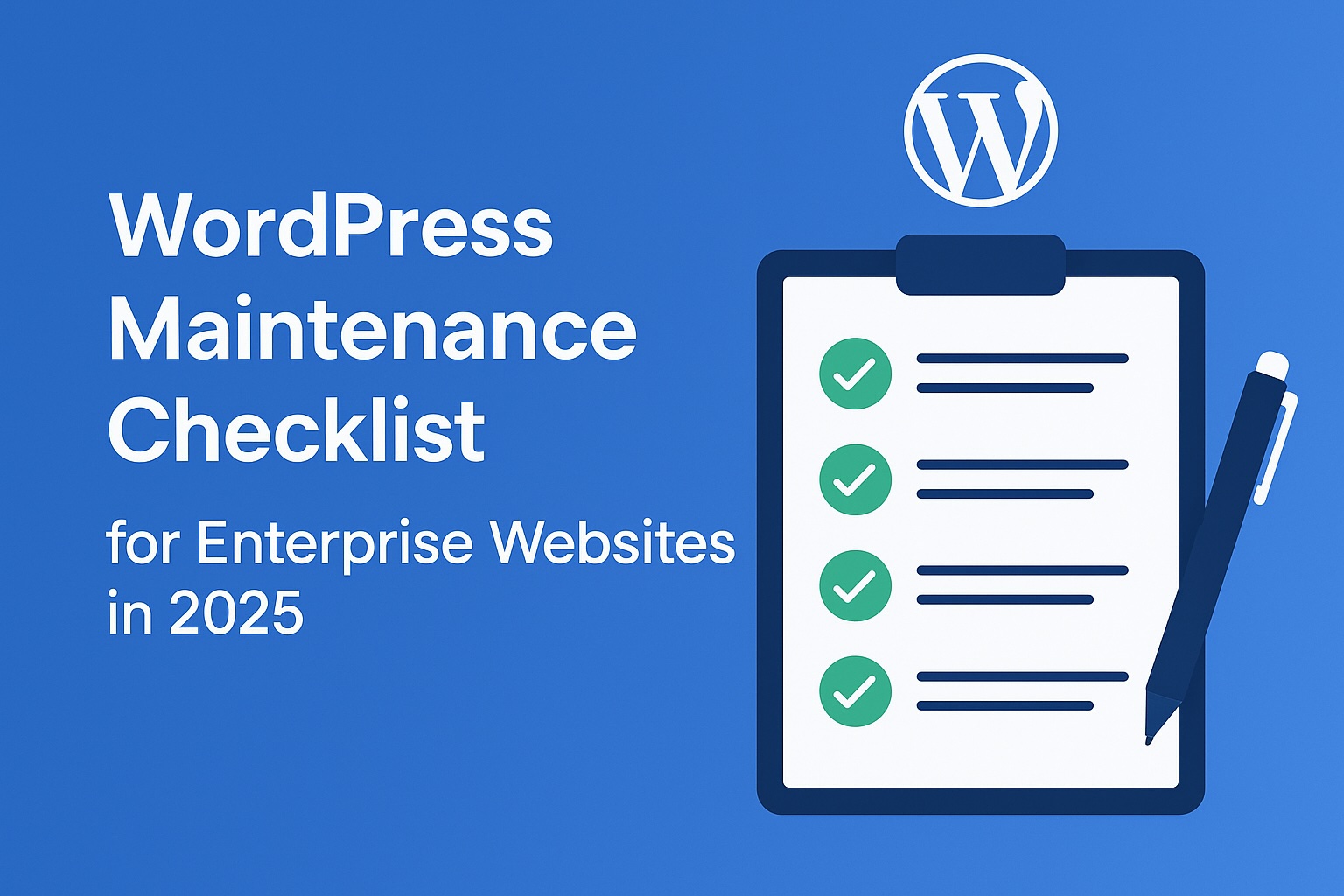Introduction
For enterprise websites, WordPress is no longer a simple blogging tool. It is a mission-critical platform that powers high-traffic portals, digital publishing platforms, e-commerce stores, and corporate ecosystems. In 2025, expectations are higher than ever: users demand fast performance, regulators demand compliance, and stakeholders demand stability. Achieving these goals requires consistent, well-structured maintenance. This article presents a detailed WordPress maintenance checklist tailored to enterprise organizations.
1. Regular Updates and Patching
Keeping WordPress core, themes, and plugins updated is non-negotiable. Outdated software introduces vulnerabilities that can be exploited.
- Core updates: Apply security patches immediately; schedule feature updates after testing.
- Plugins and themes: Update weekly, but only after verifying compatibility in a staging environment.
- Custom code: Review at least quarterly to ensure it complies with WordPress coding standards.
Internal link: See how we approach enterprise-grade updates in our WordPress Support & Maintenance services.
External reference: WordPress.org Security Team provides details on update policies.
2. Daily Backups and Redundancy
Backups are the backbone of resilience.
- Perform daily full backups of the database and file system.
- Store backups in at least two independent locations (e.g., AWS S3 and Google Cloud).
- Test restore procedures monthly.
External reference: AWS Backup best practices.
3. Performance Monitoring and Optimization
Enterprise websites must load in under two seconds to maintain conversions and SEO visibility.
- Use tools like Google Lighthouse, PageSpeed Insights, and WebPageTest to track Core Web Vitals.
- Optimize images (WebP, AVIF) and use lazy loading.
- Implement full-page caching with systems like Varnish or Cloudflare.
- Review database queries for inefficiencies.
Internal link: Our insights on improving website performance provide additional techniques.
External reference: Google PageSpeed Insights.
4. Security Hardening
A strong security baseline protects against data breaches and compliance failures.
- Enforce HTTPS and HSTS headers.
- Use Web Application Firewalls (WAF) such as Cloudflare or Sucuri.
- Apply strong Content Security Policies (CSP).
- Enforce multi-factor authentication for admin access.
- Regularly scan for malware and vulnerabilities.
Internal link: Learn more in our guide to WordPress Security Hardening.
External reference: OWASP Top Ten 2021.
5. Uptime and Availability Monitoring
Downtime costs enterprises both money and reputation.
- Implement 24/7 uptime monitoring with alerts.
- Use load balancing to distribute traffic.
- Conduct failover drills twice a year.
External reference: Pingdom Website Monitoring.
6. Compliance and Audit Logs
Regulated industries (finance, healthcare, publishing) must demonstrate compliance.
- Enable detailed audit logs of user activity.
- Ensure GDPR, SOC 2, and ISO 27001 compliance.
- Conduct annual penetration tests.
Internal link: Discover how we support compliance in enterprise projects on our WordPress VIP Partner page.
7. Content and SEO Maintenance
Maintenance is not only technical; content plays a role too.
- Check for broken links quarterly.
- Update metadata and schema to match current SEO best practices.
- Refresh outdated content annually.
External reference: Google Search Central SEO Starter Guide.
8. Disaster Recovery Planning
Even with precautions, incidents happen. Enterprises need recovery protocols.
- Define RPO (Recovery Point Objective) and RTO (Recovery Time Objective).
- Document step-by-step disaster recovery workflows.
- Train staff annually.
Conclusion
WordPress maintenance for enterprise websites in 2025 requires more than ad-hoc updates. It demands structured processes, automation, and constant vigilance. Organizations that follow this checklist not only minimize downtime and risks but also position their websites as reliable digital assets. Hardening WordPress







